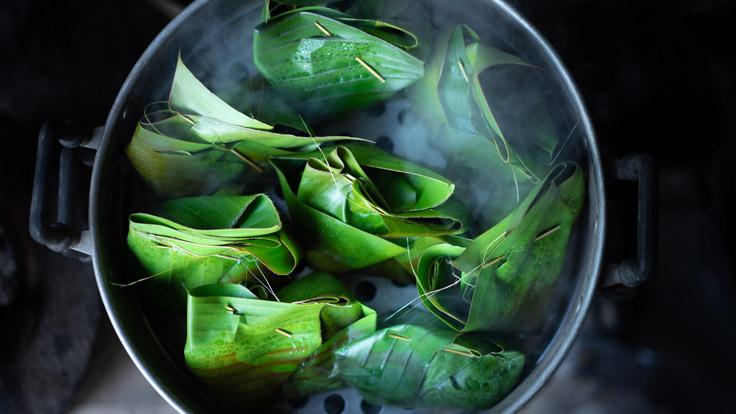Fundamental to the northern Thai kitchen is making the most of local materials. From sturdy hardwoods like teak to fast-growing plants like bamboo, and even minerals from the mountains themselves, the North’s natural resources have stood the test of time to remain fixtures in both home and commercial kitchens.

Ceramics
Northern Thailand’s soil is rich in kaolinite, a clay mineral that creates white ceramic. One of Thailand's most iconic kaolinite ceramics is the hand-painted chicken bowl of Lampang province (cham tra kai), where kaolin clay (din khao) is found in abundance. The ceramic bowls are sturdy, heat-resistant and have become the preferred vessel for staples like khao soi noodles and khanom chin nam ngiaw. The chicken pattern found on these bowls is a remnant of the past, as they were inspired by imported bowls from China.

The Krok
“The krok (mortar) is the beginning of many recipes,” says Chef Chalee Kader, 100 Mahaseth (Bib Gourmand). “It’s widely used to grind spices, rice, and herbs or to make doughs, dips, relishes, and curry pastes. Whether they are krok mai (wood), krok din pao (clay), or krok hin (stone), they have evolved through time and purpose and have been engraved in our culture for a very long time.”
Through the centuries, different types of kroks have established their niches in northern Thailand cuisine. It is generally accepted that stone (mostly granite) ones are the workhorses for creating curry pastes for kaeng hang le (pork belly curry) or nam prik ong (Northern-style tomato relish). Wooden and clay mortar and pestles are more common for papaya salads and other ‘tums’. This tradition extends from the North to the Northeast of Thailand.

Leaf Wraps
Wrapping food in natural materials for cooking and transport is a hallmark of traditional northern Thai cuisine. While this practice is ubiquitous throughout much of Asian cooking, Thailand’s northern region is particularly blessed with a cool and rainy jungle climate that really supports bamboo, banana, and lotus plants. It is then only natural that they are used in traditional dishes and are now experiencing a resurgence as eco-friendly alternatives to plastics.

Banana leaf (bai tong) is the common natural wrapping. The flexible yet durable leaves impart a pleasant flavour, making them perfect for steaming and grilling food. They are also the traditional wrapping for fermented pork sausages (naem) and the northern speciality, banana-leaf grilled egg (kai pam). Other less common options are lotus leaves (bai bua) and fragrant pandan leaves (bai toey), which are used to infuse aroma.

Bamboo
The ever-versatile bamboo takes on an even larger role in the North. As sticky rice is preferred to traditional jasmine rice, woven bamboo rice steamers have been used for centuries to ensure perfect texture. The finished rice is then kept in bamboo holders to maintain the proper serving temperature. This is especially useful in the region’s chilly climates.
When it comes to dessert, khao lam, or bamboo-steamed sweet glutinous rice, is a popular treat. The sticky rice is cooked with coconut milk, sugar, and sometimes black beans right in a bamboo segment over charcoal. The bamboo keeps the rice moist and infuses the dish with an earthy, woody flavour.



















